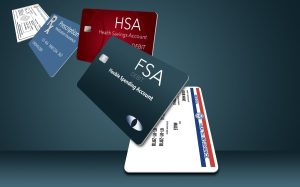Life has a way of surprising us, often when we least expect it. An unforeseen medical bill, sudden car repair, or temporary loss of income can create chaos in an unprepared household. Emergency savings provide a crucial buffer, offering peace of mind and financial stability when unexpected expenses arise. But this safety net is not just about stashing money away—it’s a deliberate strategy to protect your future.
For those who think building an emergency fund is daunting, the truth is that it’s more accessible than it seems. Breaking the process into manageable steps can transform this intimidating task into an achievable goal. Whether you’re just starting or refining an existing strategy, embracing a systematic approach will ensure you’re prepared for life’s twists and turns.
Setting realistic goals for your emergency fund

A well-planned emergency fund begins with defining specific, attainable goals. Setting clear objectives ensures that every dollar saved contributes to a larger purpose, providing clarity and motivation throughout the process, ultimately helping you stay focused on financial resilience.
Assessing your monthly expenses
Understanding your monthly expenses is the cornerstone of determining the size of your emergency fund. Begin by listing essential costs: housing, utilities, groceries, transportation, and insurance. These are the non-negotiables that sustain your lifestyle. Financial experts recommend saving enough to cover three to six months of these expenses. However, this range isn’t set in stone. Your job security, family size, and individual circumstances might necessitate a smaller or larger cushion.
For instance, someone with stable income and minimal dependents might aim for three months, while freelancers or those in volatile industries may benefit from saving closer to six or even nine months. Tailoring your goal to fit your unique situation ensures it remains relevant and achievable.
Starting small to build momentum
While a six-month reserve might seem overwhelming initially, starting with a smaller, achievable goal—like saving $500 or $1,000—can create momentum. This amount covers many common emergencies, such as minor car repairs or unexpected utility bills, giving you immediate relief and a sense of accomplishment.
Once this initial milestone is reached, gradually increase your target by increments. Celebrate small wins along the way to keep yourself motivated. This step-by-step approach makes saving less intimidating and fosters consistency over time.
Creating a dedicated savings plan
Building an emergency fund requires commitment and structure. A dedicated savings plan ensures your goals are met systematically and efficiently, making the journey toward financial stability both achievable and rewarding, while building habits that support long-term financial health.
Automating your savings
Automation is one of the most effective ways to save consistently. Set up automatic transfers from your checking account to a high-yield savings account as soon as your paycheck arrives. Treat this transfer like any other fixed expense, such as rent or a car payment. By prioritizing savings, you remove the temptation to spend this money elsewhere.
For those who rely on variable income, automation can still work. Calculate a percentage of your earnings to transfer instead of a fixed amount. This ensures your contributions remain proportional to your income, even during fluctuating months.
Leveraging found money
Unexpected income, like tax refunds, bonuses, or monetary gifts, presents an excellent opportunity to accelerate your savings. While it’s tempting to splurge, allocating a significant portion—or even all—of this windfall to your emergency fund can provide a meaningful boost.
Imagine receiving a $2,000 tax refund and directing half toward your savings—it’s an impactful way to close the gap toward your goal quickly. Additionally, consider redirecting funds from canceled subscriptions, lower-than-expected utility bills, or other financial “found money” to your emergency account. Every little bit adds up.
Choosing the right account for your savings
Selecting an appropriate account for your emergency fund is just as important as saving itself. Your choice should prioritize accessibility while offering a return that helps your money grow, ensuring your hard-earned savings remain secure and fruitful for any unexpected scenarios.
High-yield savings accounts
A high-yield savings account is often the best option for emergency funds. These accounts typically offer competitive interest rates compared to traditional savings accounts, ensuring your money works harder for you. Many online banks provide high-yield accounts with no monthly fees, making them both accessible and cost-effective.
The added benefit of separating your emergency savings from your primary checking account reduces the temptation to dip into the fund for non-emergencies. Easy access in times of genuine need ensures these savings remain functional without unnecessary hurdles.
Money market accounts and certificates of deposit (CDs)
If you’re exploring alternatives, consider money market accounts and certificates of deposit (CDs). Money market accounts combine the liquidity of savings accounts with slightly higher interest rates, while CDs offer even better returns by locking your funds for a predetermined period.
For those considering CDs, opt for a laddering strategy—investing in multiple CDs with staggered maturity dates. This provides periodic access to your money without sacrificing interest gains. However, weigh these options carefully, as they may not offer the same immediate access as a savings account.
Staying committed to your savings journey
Consistency is the key to building and maintaining a robust emergency fund. Staying committed ensures you not only reach your goal but also sustain it in the long term, fostering a sense of security and preparedness for life’s uncertainties, no matter the challenges that arise.
Reassessing your budget regularly
Your financial circumstances will evolve, and so should your savings plan. Schedule quarterly or biannual budget reviews to identify areas where you can free up extra funds. For example, eliminating unused subscriptions, negotiating lower utility rates, or reducing dining-out expenses can create additional savings opportunities.
Use these moments to evaluate your emergency fund’s adequacy. Have your monthly expenses increased? Did a significant life change, such as marriage or parenthood, occur? Regular assessments ensure your fund remains aligned with your needs.
Avoiding the temptation to dip into savings
One of the biggest challenges is resisting the urge to use your emergency fund for non-emergencies. Define what constitutes an “emergency” upfront—unexpected medical bills, urgent car repairs, or temporary job loss. Non-urgent expenses, like vacations or new gadgets, should be covered by separate savings. To reinforce this discipline, consider creating multiple savings accounts for different purposes. For instance, a travel fund or a gadget fund can coexist with your emergency savings, minimizing the temptation to pull from the latter.





